If you’re hanging out at home, crack open a beer, because Cadillac’s done it again. The American luxury brand recently debuted two of its most-awaited vehicles: the Cadillac CT4-V Blackwing and CT5-V Blackwing. Both sedans, on paper, look far superior to their successors, the ATS-V and CTS-V, respectively. Enjoying that beer you’re drinking? Well, it’s time to pour some out. Shortly after the two Blackwing models were introduced, Cadillac made another shocking announcement – these will be the last performance cars to wear a V badge to solely be powered by an internal-combustion engine. In every sense of the words, these two truly do represent the end of an era.
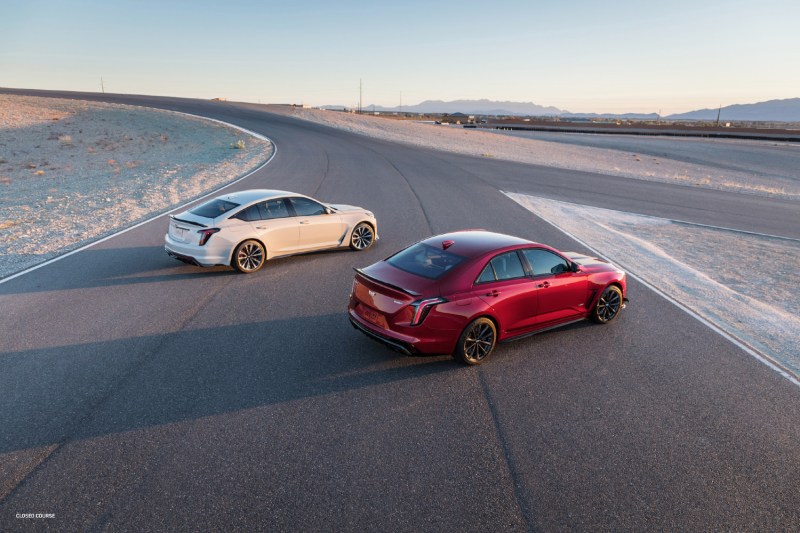
Before we get too sappy, here’s the rundown on the two sedans. The compact CT4-V Blackwing (finished in red) is the smaller, more affordable of the two. Under the hood, the sedan utilizes a twin-turbo 3.6-liter V6 engine that’s good for 472 horsepower and 445 pound-feet of torque. Over the old ATS-V, the CT4-V Blackwing has grippier Michelin Pilot Sport 4S tires, an updated version of magnetorheological dampers as standard equipment, larger brakes, and aluminum housing for the electronic limited-slip differential. Of course, the cabin is filled with modern equipment, like a special AKG audio system and a digital gauge cluster, but these are secondary points to the performance.
Related Guides
The real star of the show is the CT5-V Blackwing (the white sedan). The monstrous sedan comes with a supercharged 6.2-liter V8 that’s putting out 668 horsepower and 659 pound-feet of torque. Each of these engines are built at the Corvette assembly plant in Bowling Green, Kentucky by a single technician. Each technician signs the engine as a mark of their craftsmanship.
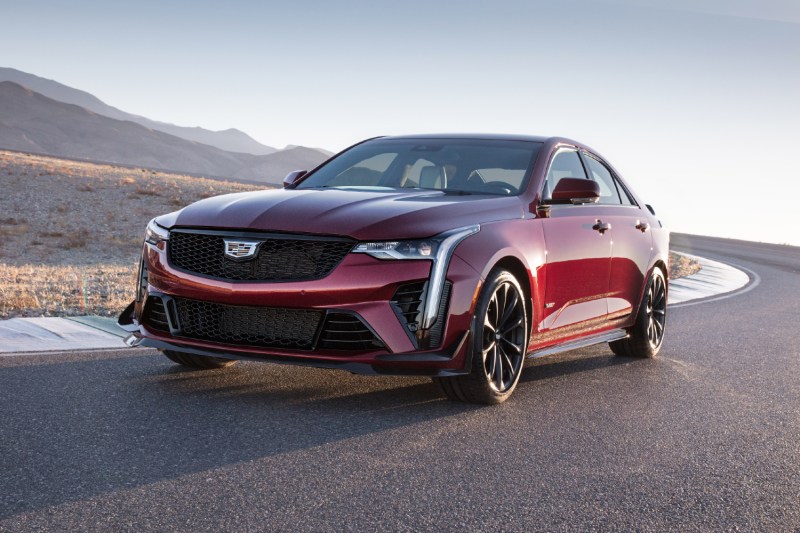
Beyond the power, the CT5-V Blackwing features Brembo brakes, 15.7-inch front rotors, an electronic limited-slip differential, forged 19-inch wheels, sticky Michelin Pilot Sport 4S tires, and coolers for the transmission and rear differential. New carbon-ceramic rotors are available for the first time, while the steering wheel features a Performance Traction Management switch. Carbon-fiber backed seats are optional, and there’s a 12-inch digital gauge cluster.
Both of these Blackwing models are rear-wheel drive only and both are available with six-speed manual transmissions. God bless Cadillac. Of course, these vehicles aren’t cheap. The CT4-V Blackwing is priced at $59,990, while the CT5-V Blackwing starts at $84,990. Still, they undercut the competition by a wide margin. No wonder Cadillac’s books were flooded with pre-orders within a few hours of their debuts.
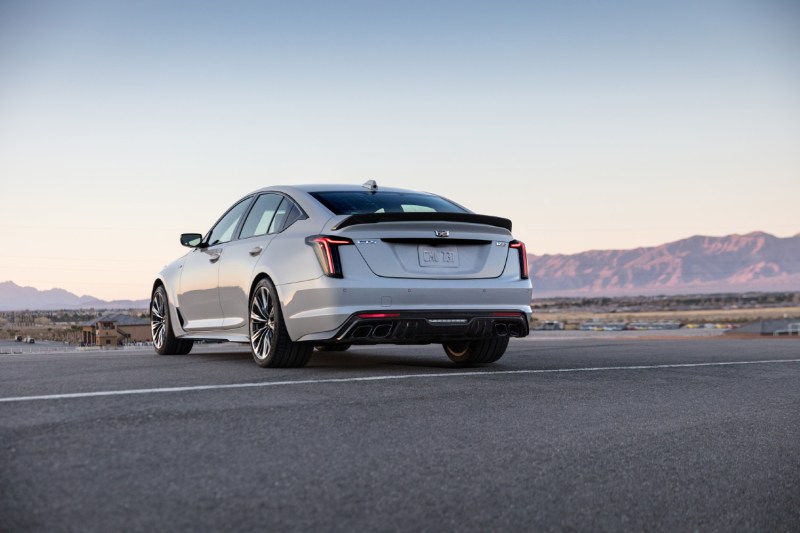
It’s hard to explain what makes these vehicles so special, but they’re exactly what enthusiasts have been asking for. The last time a sedan with a V8 engine was available with rear-wheel drive and a manual transmission was the Chevrolet SS. Even high-performance sports cars – ahem, the Corvette – ditched manuals a long time ago in their pursuit of quicker zero-to-60 mph figures and lap times. Yet, the fun dissolved. The need for the driver to play a pivotal role in getting the car around a stretch of corners became muted. All of these things, driver engagement, V8 engines, manual transmissions, rear-wheel drive, are on the chopping block with the rise of electric vehicles and self-driving technology. It’s the price of progress.
For General Motors, Cadillac’s future is EV and semi-autonomous-tech heavy. The CT4-V Blackwing and CT5-V Blackwing have no place in that future. By today’s standards, the pair are actually dinosaurs. That’s what makes them so special. Not only do these vehicles come with the holy trinity of features – rear-wheel drive, a manual transmission, and incredibly powerful engines – they do so at a time when few others do. Know how many sporty cars Chevrolet offers with rear-wheel drive and a manual transmission? One. It’s the Camaro.
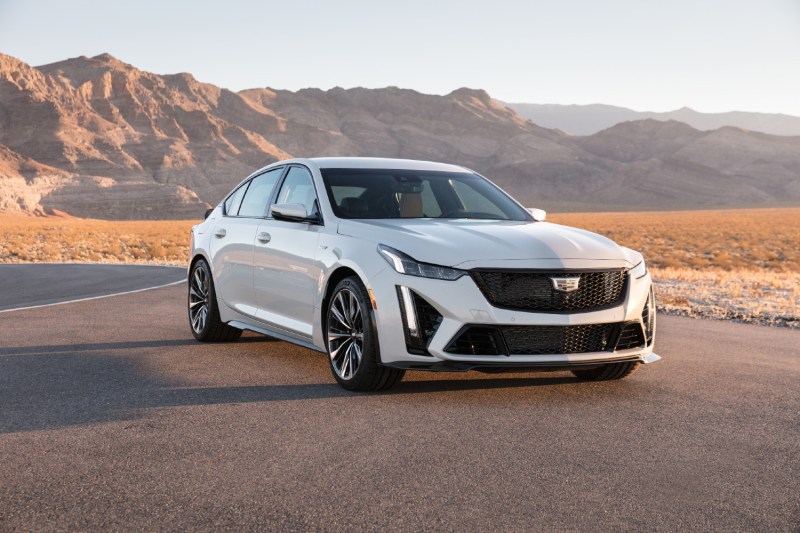
It’s not just GM that’s looking down a barrel with its V8 engines. In an earlier interview with CNBC, Dodge CEO Tim Kuniskis stated that “the days of an iron block supercharged 6.2-liter V8 are numbered” because of compliance costs. Not only that, but V8-powered vehicles simply can’t match electric cars these days. The recently refreshed Tesla Model S is now pushing out over 1,100 horsepower and has a zero-to-60 mph time that’s below 2 seconds. The Porsche Taycan Turbo S has 750 horsepower and can get to 60 mph in 2.6 seconds. Upcoming pickup trucks like the GMC Hummer EV and Rivian R1T are expected to arrive with more horsepower and better performance than the Blackwing models.
Cadillac’s decision to come out with the CT4-V Blackwing and CT5-V Blackwing during this phase when performance cars are transitioning to the green side is astounding. The internal-combustion engine’s days are numbered. Hybrid and plug-in hybrid technology may extend the timeline a bit, but American V8s are on track to become extinct in the same way as the Western Black Rhino – painfully, slowly, and one poor creature at a time.
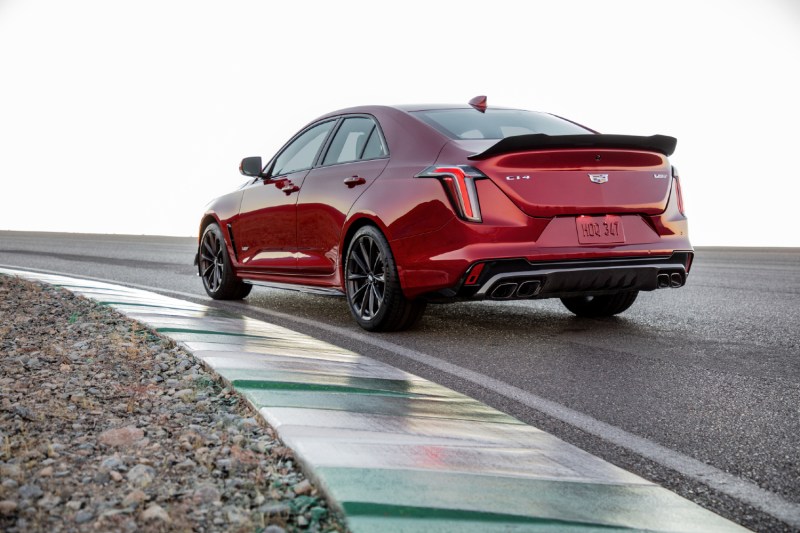
This certainly seems like the end of the line. If it is, what a glorious send-off. Consumers that get to purchase one of these special sedans get to enjoy the best of what cars with internal-combustion engines could offer. Everyone should say a hushed “thank you” to Cadillac for going out in a bang and not a silent whirl of electricity.



